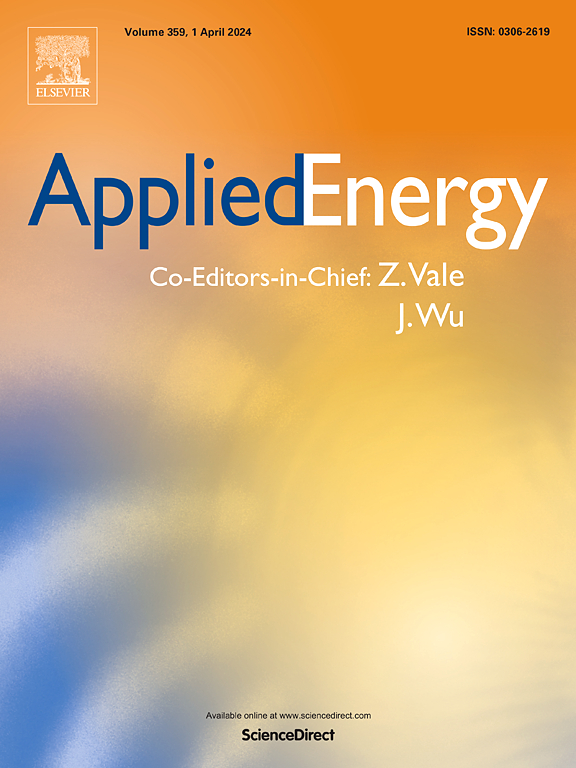Optimization of hybrid sensible-latent seasonal heat storage systems
IF 11
1区 工程技术
Q1 ENERGY & FUELS
引用次数: 0
Abstract
This study presents a coupled techno-economic and environmental model of hybrid sensible-latent thermal energy storage (TES) systems, integrating phase change material (PCM) macro-capsules to enhance storage capacity and performance. The multi-scale model accounts for stratification in the sensible storage and phase change dynamics in the PCM capsules. This framework is used to perform multi-objective optimization across the full range of thermal self-sufficiency () levels for a multi-family building. The results show that a 70 % offers the optimal balance between economic feasibility and environmental impact, with a Levelized Cost of Heat (LCOH) of 0.27 CHF/kWh and a Global Warming Potential (GWP) reduction of 76 % compared to fossil fuel alternatives. Systems targeting up to 85 % are technically feasible but come with increased costs (up to 0.33 CHF/kWh), while exceeding 85 % results in exponential increases in both cost and storage volume. Maximizing photovoltaic (PV) and heat pump (HP) power is critical for optimizing system performance. Future advancements in PCM technology and decreasing PV costs could lower the LCOH to 0.23 CHF/kWh and the GWP to 21 % of fossil fuel systems, demonstrating significant potential for long-term cost reductions and sustainability.
季节显潜混合蓄热系统的优化
本研究提出了一种结合相变材料(PCM)宏观胶囊的显潜热储能(TES)系统的技术经济和环境耦合模型,以提高储能容量和性能。该多尺度模型考虑了PCM胶囊中感应储存的分层和相变动力学。该框架用于在多户建筑的热自给(SSth)水平的全范围内执行多目标优化。结果表明,与化石燃料替代品相比,70% %的SSth提供了经济可行性和环境影响之间的最佳平衡,平均热成本(LCOH)为0.27 CHF/kWh,全球变暖潜能值(GWP)降低76. %。达到85% % SSth的系统在技术上是可行的,但成本会增加(高达0.33瑞士法郎/千瓦时),而超过85% % SSth会导致成本和存储容量呈指数级增长。最大化光伏(PV)和热泵(HP)功率是优化系统性能的关键。未来PCM技术的进步和光伏成本的降低可能会将化石燃料系统的LCOH降至0.23瑞士法郎/千瓦时,GWP降至21. %,显示出长期成本降低和可持续性的巨大潜力。
本文章由计算机程序翻译,如有差异,请以英文原文为准。
求助全文
约1分钟内获得全文
求助全文
来源期刊

Applied Energy
工程技术-工程:化工
CiteScore
21.20
自引率
10.70%
发文量
1830
审稿时长
41 days
期刊介绍:
Applied Energy serves as a platform for sharing innovations, research, development, and demonstrations in energy conversion, conservation, and sustainable energy systems. The journal covers topics such as optimal energy resource use, environmental pollutant mitigation, and energy process analysis. It welcomes original papers, review articles, technical notes, and letters to the editor. Authors are encouraged to submit manuscripts that bridge the gap between research, development, and implementation. The journal addresses a wide spectrum of topics, including fossil and renewable energy technologies, energy economics, and environmental impacts. Applied Energy also explores modeling and forecasting, conservation strategies, and the social and economic implications of energy policies, including climate change mitigation. It is complemented by the open-access journal Advances in Applied Energy.
 求助内容:
求助内容: 应助结果提醒方式:
应助结果提醒方式:


